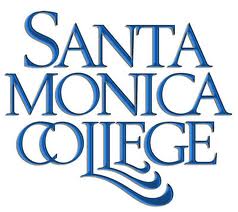The Santa Monica College (SMC) John Drescher Planetarium will present special feature shows in March highlighting the Apollo 9 mission, a telescope viewing session with a focus on the Moon and the Pleiades (Seven Sisters), an explanation of solstices and equinoxes, and an update on developments in Solar System exploration. The feature shows — as well as the planetarium’s popular Night Sky Show — will be held on Friday evenings.
The evening events are at 8 p.m. and are preceded by “The Night Sky Show” at 7 p.m., offering the latest news in astronomy and space exploration, a family-friendly “tour” of the constellations, and the chance to ask astronomy-related questions.
The March events are:
- March 1 & 8: 50-Year Retrospective: The Flights of Apollo: “Apollo 9 – Gumdrop and Spider” — Today, almost nobody recalls Apollo 9, the crucial first test flight of the complete spacecraft “stack” — the Command/Service Module (CSM) and Lunar Module (LM) — in Earth orbit. Yet this complex, challenging mission flown by Jim McDivitt, Dave Scott, and Rusty Schweickart incorporated numerous daunting “firsts,” and yielded some of the most beautiful images of the Earth’s surface of any NASA flight up to that time.
- March 15: Special Observing Event: “A Gibbous Moon, the Pleiades, and (maybe) a Very Red Star!” — A look through a variety of telescopes at a 9-day-old gibbous Moon and its Mare Imbrium, Copernicus, and Plato craters, plus wide field views of the Pleiades (Seven Sisters) star cluster, and if weather permits, a look at the pulsating red giant R Leporis (Hind’s Crimson Star). If clouds intervene, the program will stay in the planetarium with high-resolution images.
- March 22: “TILT! Equinoxes and Solstices Explained” — Most city dwellers are only vaguely aware of what the equinoxes and solstices actually are. The Digistar planetarium projector and other imagery will be used to try to remedy this disconnect from the natural world — and dispel some myths, like that egg-standing-on-end story….
- March 29: “Solar System Exploration Update” — An update on humanity’s collective quest to understand the cosmos includes the New Horizons encounter with mysterious Kuiper Belt object Ultima Thule, the InSight Mars Lander mission, the progress of Japan’s Hayabusa 2 and the NASA OSIRIS-REx missions, the first-ever landing on the lunar farside by China’s Chang’e 4, and the JUNO mission around Jupiter. Note: This show will also be presented on April 5.
The John Drescher Planetarium, which features a Digistar projection system, is located near the elevators on the second floor of Drescher Hall (1900 Pico Blvd., Santa Monica). Tickets are available at the door and cost $11 ($9 seniors and children) for the evening’s scheduled “double bill,” or $6 ($5 seniors age 60+ and children age 12 and under) for a single Night Sky or feature show or telescope-viewing session.
For information, please call 310-434-3005 or see www.smc.edu/eventsinfo or www.smc.edu/planetarium. All shows subject to change or cancellation without notice.
Submitted by Grace Smith, SMC Public Information Officer









